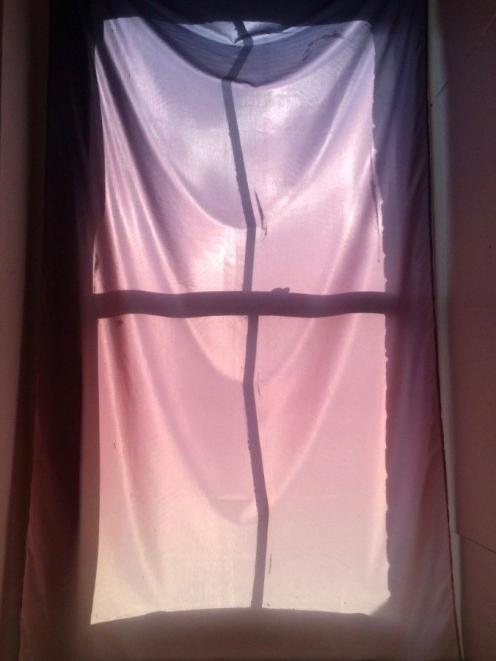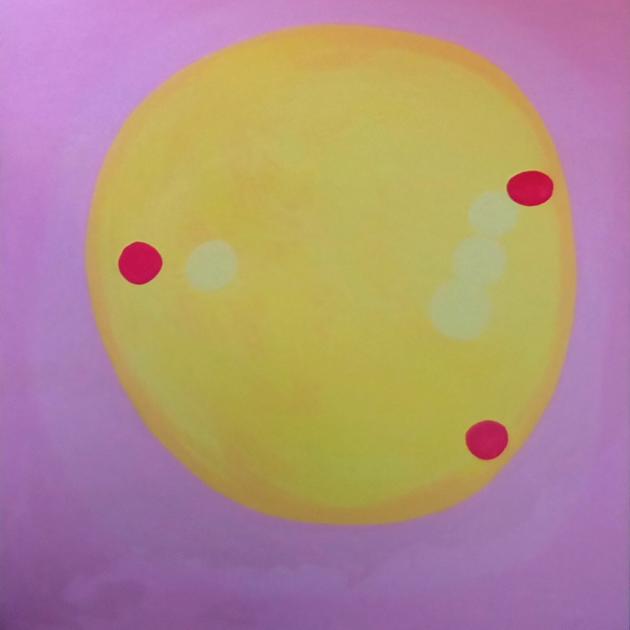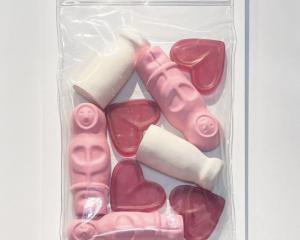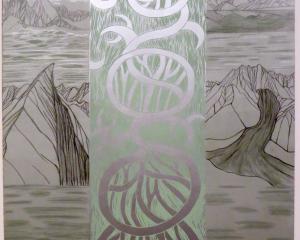In this week's Art Seen, Robyn Maree Pickens looks at exhibitions from Matthew Galloway, Michael Morley, and Pea Sea Art.
 Endless, by Matthew Galloway
''Endless'', Matthew Galloway (Laurel Project Space)
Endless, by Matthew Galloway
''Endless'', Matthew Galloway (Laurel Project Space)

The light was perfect when I viewed ''Endless'' at Laurel. Matthew Galloway's attention to the site-specificity of Laurel's many-windowed space has resulted in some of the most resonant works of the artist's I have seen to date.
Galloway has hung large, silk flags over the two main windows in the space, and two in the reading room: one over the entrance, and the other over the window. The flags - via their colouration - trace the arc of a 24-hour period beginning with pale, lemony dawn at the bottom before graduating upwards to dark navy at the top.
As such, these flag works successfully embody the transactions between day and night suggested by the exhibition's title. This endless cycling of diurnal and nocturnal states is amplified by Galloway's placement of the flags over the gallery's windows.
To this application of endless, Galloway adds in references to the Ravensdown factory, a white decal of the Otago Settler's Association logo of a sailing ship, and a downbeat quote from Proverbs incised word by word on individual metal rods, ''Everything is meaningless under the sun.''
There are a lot of referents in this exhibition, and while cohesion between them all can be forged, there is such beauty and elemental connection between the flags and the Ravensdown video work - a diptych showing fuming chimneys - that one is tempted to wonder what a pared back version of this exhibition would look like.
 Burst Mode (slight return), by Michael Morley
''I Remember Nothing'', Michael Morley (Olga)
Burst Mode (slight return), by Michael Morley
''I Remember Nothing'', Michael Morley (Olga)

''I Remember Nothing'', by Michael Morley, feels like a mini retrospective of sorts: one that takes in a selection of prints and paintings by the artist over a 10-year period from 2008-18. The insouciance of the exhibition title seems to bolster the idea that time is an ever-present entity, regardless of whether it is remembered or not.
On first glance, the two bodies of work in this exhibition seem disparate - with prints on the left side of the gallery, and paintings on the right. The subject matter and style of the two bodies also seem to express difference over cohesion. While the prints are figurative and depict recognisable objects, such as record players, the paintings are abstract, comprising bands of colour and irregular geometric shapes. The paintings are a wall of bright, even uncanny pastels, while the aquatint prints are shades of black on white paper.
However, a scan of the titles of both bodies of work point towards a single mind, even when the print titles are primarily derived from song titles, such as Love Will Tear Us Apart (2008), while the painting titles point towards historical atrocities (Who Makes The Nazis? 2018) and statecraft as in Foreign Lawns (2018). For me, a hinge between the two bodies of work can be found in a small unassuming aquatint of a backpack: not a regular backpack however, but a print of the one used to blow up the Rainbow Warrior.
 a. pentagonalistic 0.3, by Dallas Henley
''Take 5'', Dallas Henley, Robert Scott, Mark Sharma (Pea Sea Art)
a. pentagonalistic 0.3, by Dallas Henley
''Take 5'', Dallas Henley, Robert Scott, Mark Sharma (Pea Sea Art)

Pea Sea Art is a newish art gallery in Port Chalmers, run by Dallas Henley and Robert Scott. The gallery has a stockroom, and also sells art supplies, recordings by local musicians, and offers art classes in drawing and painting.
For the gallery's current exhibition, Henley and Scott decided to let temporal parameters dictate formal constraints on the format of the work exhibited. What this means in real terms is that the gallery's fifth exhibition opened on the fifth of the fifth month at 5pm and the artists had to make five-sided, or pentagonal, works. In setting the parameters for this exhibition, Henley and Scott were inspired by the pentagonal works of Dutch artist Gerard Caris (b1925).
''Take 5'' includes works by Henley and Scott, and one work by Mark Sharma.
Henley and Scott have fully embraced the pentagonal constraint and created works in a range of mediums. Where Scott has ranged across figurative works on pentagonal canvases, shaped wooden works, and brightly coloured abstract works also on pentagonal-shaped canvases, Henley has made abstract works on canvas and watercolour paper. Her small pentagon-shaped canvases pool colour in a way that resembles alluvial deposits and streaks of minerals, while her ink and watercolour works on paper are studies that diffract the pentagon in seemingly endless developments.







![Untitled (c. mid 1990s, [pink 3]), by Martin Thompson, 415mm×590mm. Photo: courtesy of Brett...](https://www.odt.co.nz/sites/default/files/styles/odt_landscape_small_related_stories/public/story/2024/02/untitled_pink_3.jpg?itok=Q0aQrc9o)




